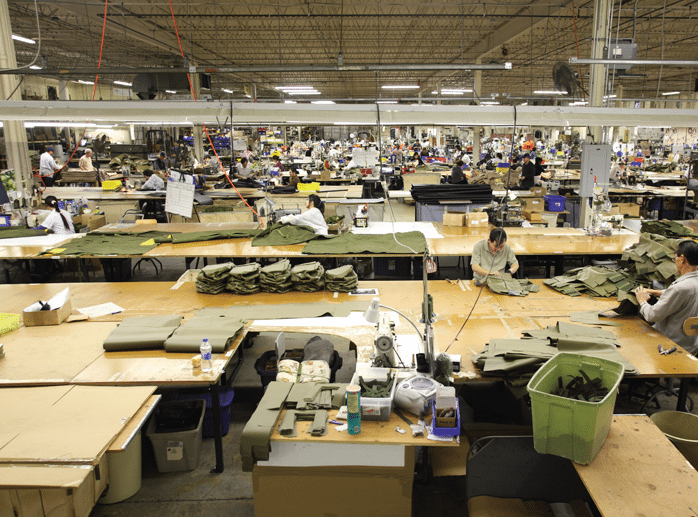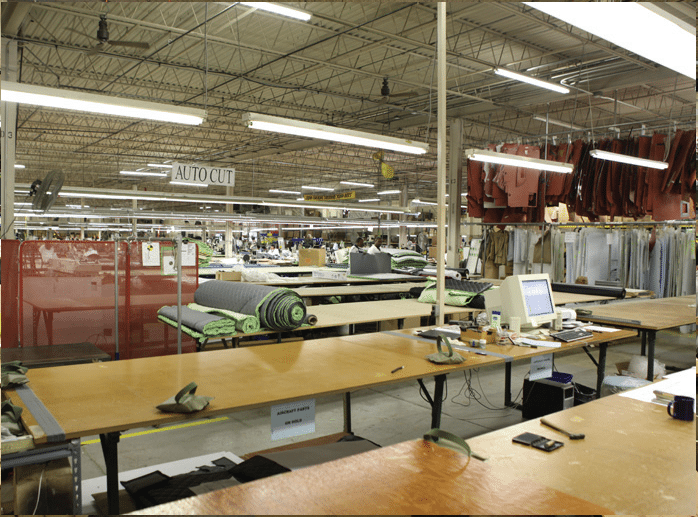Case Study: Ehmke Manufacturing Company Production Floor – Value Stream Mapping Production Line #104A
Customer: Defense Supply Center Philadelphia (DSCP)
Services: Improve productivity and reduce product lead-time
Commencement: January, 2008
Case Study: Ehmke Manufacturing Company Production Floor – Value Stream Mapping Production Line #104A
Customer: Defense Supply Center Philadelphia (DSCP)
Services: Improve productivity and reduce product lead-time
Commencement: January, 2008
Production Line #104A did not meet our customer’s requirement of producing 100 sets per week. Each set of products consisted of four items: one (1) carrying case, one (1) belt harness and two (2) straps. The challenge was to balance the cellular production line to produce the desired output with three (3) operators.
The current state showed 5 operators producing approximately 65-72 sets per week. Our internal, cross-functional LEAN team developed goals to balance the production line, “5S” the area, and develop a Communication Board to visually convey all pertinent information. Each team was comprised of sewing machine operators, quality personnel, design engineers, plant operations and two (2) outside manufacturing partners.

The scope of work covered four (4) primary goals:
To accomplish these goals, the LEAN Team proposed to spend less than $100 to purchase color coded bins, tape and supplies

The anticipated “future state” output of 25 sets per week (utilizing three (3) operators instead of the “current state” five (5) operators) will save the company approximately $960 per week in production costs. The Communication Board visual design will be used throughout the shop floor to eliminate wasted time in transmitting information and reduce errors.